Inside the dangerous rescue for Brazil flood victims

Albertina was rescued by boat after seeing helicopters fly over her family's home without stopping
- Published
“I came here with just the clothes on my back. Nothing, nothing at all,” says 71-year-old Albertina Simonetti.
She is one of about 6,000 people now living in a university sports hall in Brazil’s southernmost state - Rio Grande do Sul.
It has been converted into a shelter for those whose homes have been destroyed in the worst floods in the state's history, which have killed more than 150 people, displaced more than 600,000 and left whole cities underwater.
People are sleeping on mattresses on the cold and crowded floor.
Albertina says she saw 50 helicopters fly over the roof of her house before a boat finally rescued her family.
She is with her husband, four of her sons and two of her grandchildren in the shelter.
Her son, Luiz, spoke of his home: “We couldn’t save anything because it was so fast.”
Luiz's family were waiting for help on the third floor of their neighbour's house while it filled up with water.
“The helicopters didn’t come to help us," he says.
"Then on Saturday night they came. But it was late at night, raining, there was a lot of water, the streets were very full, you could no longer see any houses – it was quite scary.
“The future is worrying, what will become of us?”
BBC's Ione Wells joins emergency services in Porto Alegre
They are among those who have at least made it out.
Many people are still stranded, or in some cases are choosing not to leave because they are afraid their flooded homes will be robbed.
But, as Luiz and Albertina describe, the rescue operations are fraught with danger too.
At a firefighter base in Porto Alegre, Ricardo Mattei, the city’s military firefighter chief, points at an aerial photograph he took from a recent rescue operation.
He tells me there used to be fifty homes and now there is only one.
It’s a small patch of land that is now entirely underwater.
All the homes but one have been entirely washed away leaving just fragments of their white frames, like skeletons, floating in the water.
“On one day, this aircraft saved 120 people from the roofs of houses,” he says, gesturing to the helicopter behind him.
With many roads underwater or flooded it is currently the only way of delivering food and aid to people still trapped and of transporting people to hospital – but it's not without its risks too.
He shows us another video of two people standing on a roof of an underwater house waiting to be rescued before the house collapses into the brown water, saying it is “very dangerous” both for the people trapped and his team.
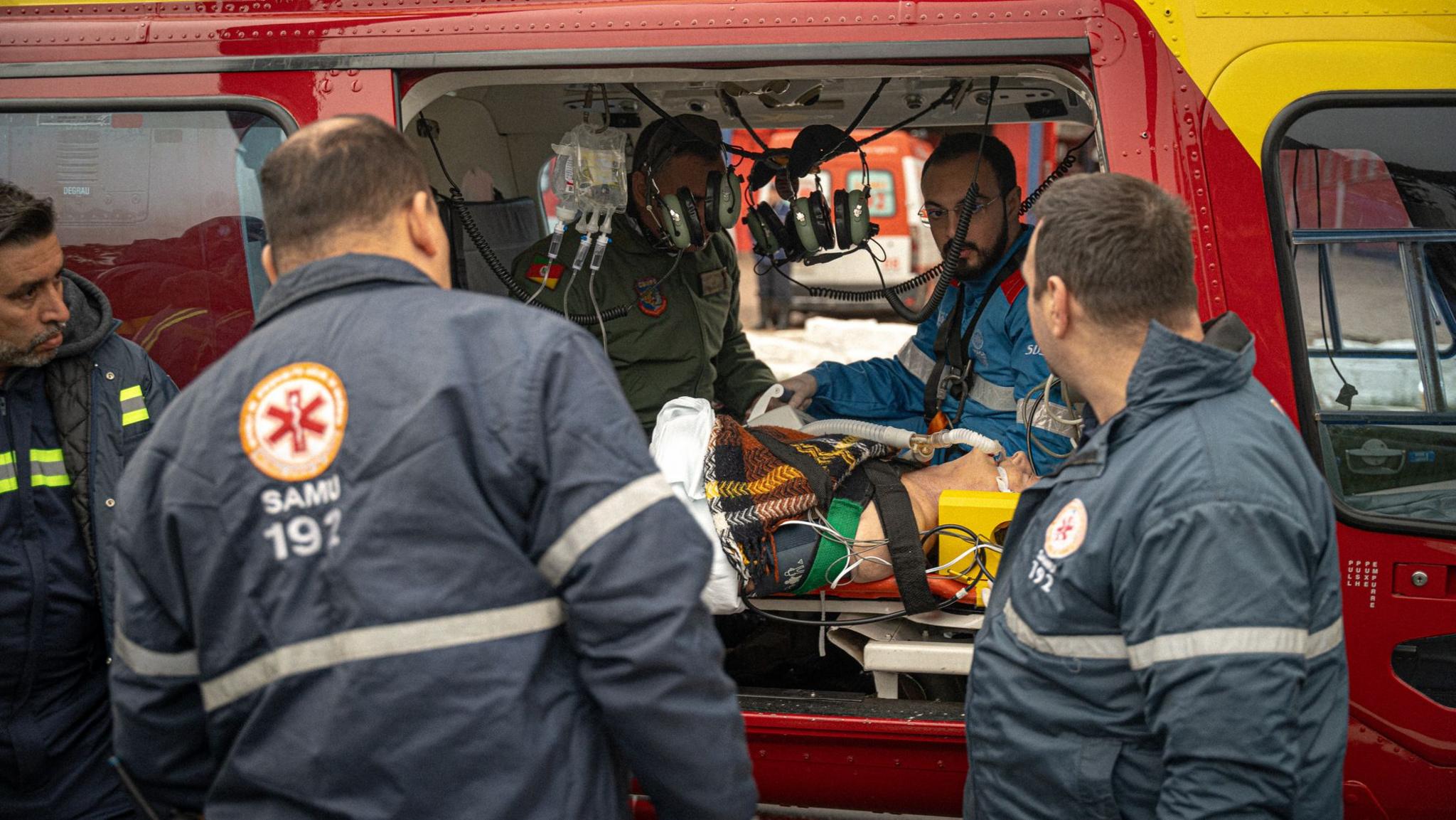
This elderly woman was in an area where access by road had become difficult
We join the military firefighters in one helicopter rescue operation to pick up an 89-year-old woman who has had a stroke and take her to a hospital.
From the sky the scale of the damage is evident.
Whole towns and large, urban city centres are in some cases almost completely underwater.
Swathes of agricultural land are ruined - which brings more economic damage ahead.
The elderly patient picked up by rescuers, Odilia Faustina Marques, was in an area which would be impossible to exit by ambulance in time.
It is near a lake which had just flooded the roads of its neighbouring towns.
Her son, Nilo José Vieira Marques, took her to a local medical centre at 08:00 local time.
Rescuers only reached her at around midday - much longer than you should leave it after a stroke.
“It’s much easier to take a helicopter than to take an ambulance, which struggle a lot with these floods,” Nilo says at the scene.
“With people dying in the waters, dogs dying, horses dying, everyone dying in the water - that’s what we didn’t want. We managed to save my mother.”
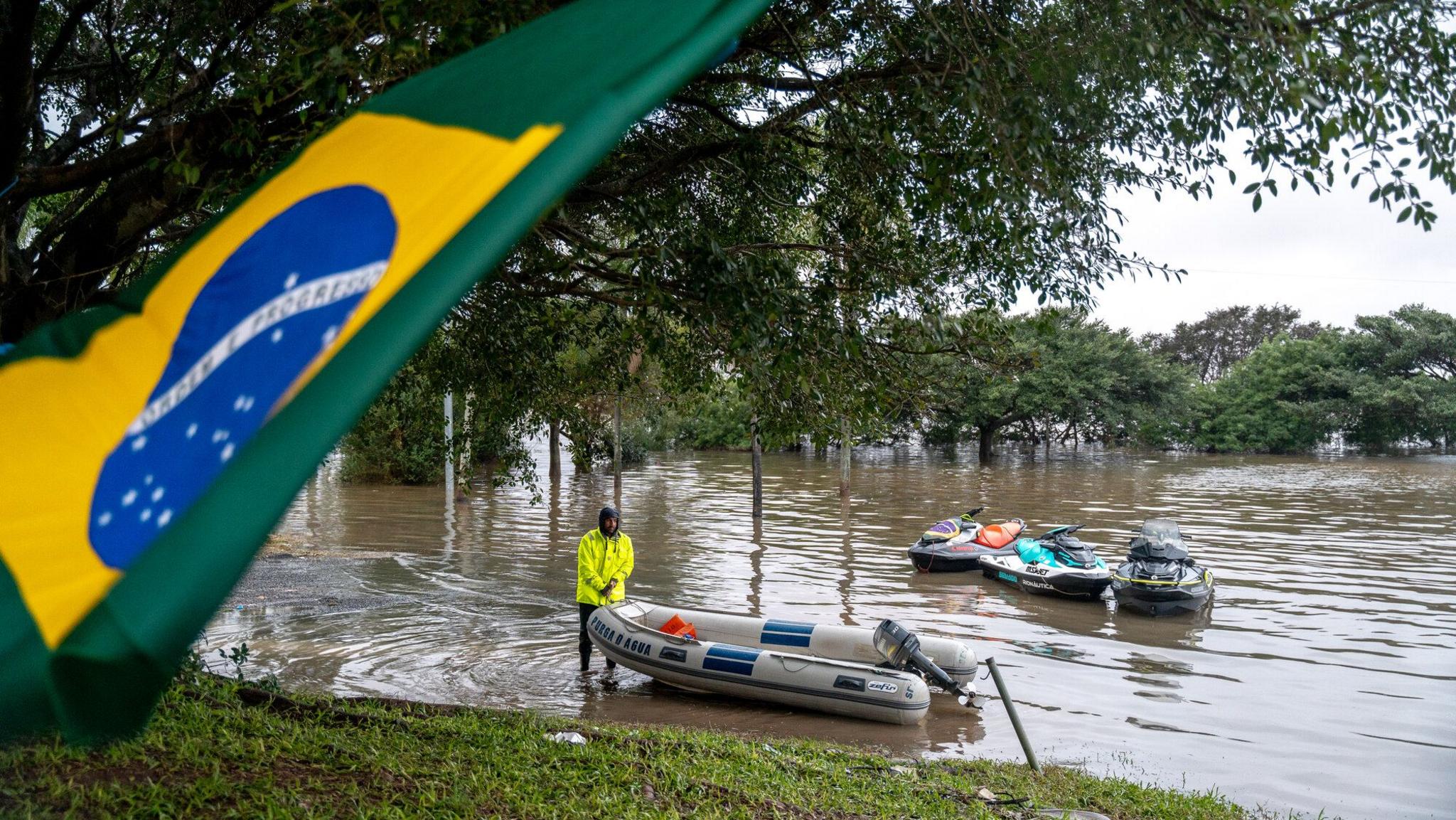
Volunteers from around the country are joining the rescue and aid effort
After dropping her at a better medical centre, the weather turns bad again. The pilots cannot see a thing.
Rain hammers down against the roof of the helicopter as we navigate through the storm clouds.
After we land, further rescue flights are called off for the day.
On the ground, volunteers from around the country - not just firefighters, military, police and doctors - try by any means to continue delivering aid to those trapped in flooded homes.
Some we speak to are using jet skis to travel across a strip of land which was once a field for festivals with an amphitheatre but is now an extension of the river.
Many of the emergency services seem frustrated. The medic who treated the elderly woman says the world hasn’t prepared for the changing climate and doesn’t seem to care about, in her words, the impact on “poorer countries".
Others manage to maintain hope even through this adversity.
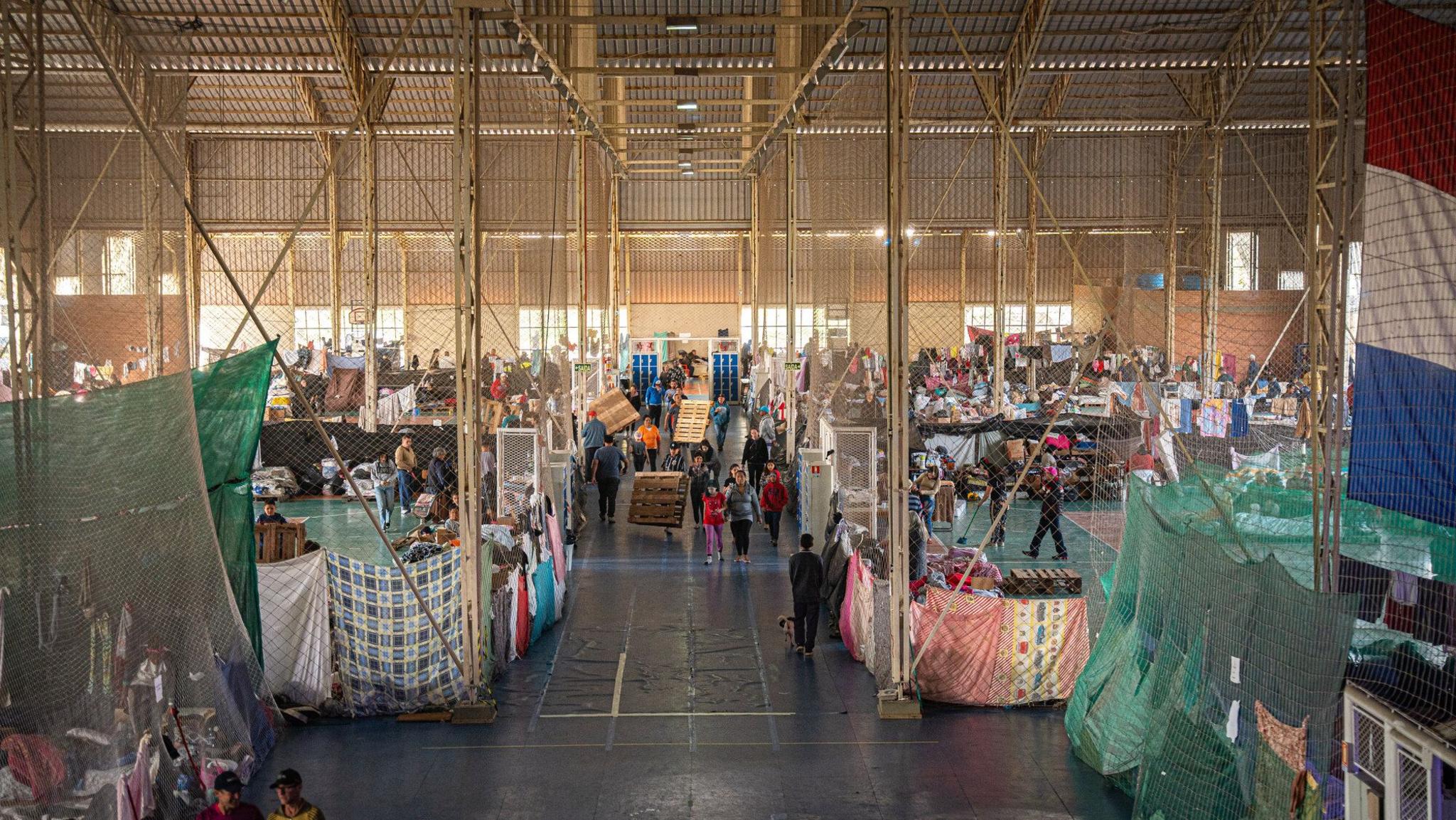
Albertina, her family and 6,000 other people are now sheltering in this sports hall
When we said goodbye to Albertina at the shelter, she held onto me with a very tight, prolonged grip - the hold of someone who has had to let go of so much.
But she says aid from volunteers, and crocheting clothes at the shelter to help others, has helped her.
“I was very sad," Albertina tells me. "I didn’t even sleep for five nights. But after I saw that it seemed like everyone was going to help us I slept.”
“So, I’m not worried because I see that we’re going to have everything. I think I’m not worried anymore.”
As we drive away, the neighbourhoods people have fled from are visible from the side of the road.
Only the roofs of most houses are still visible above the water. Most are totally destroyed.
Hope of returning to, and rebuilding, their lives soon is the branch people like Albertina are gripping onto tightly, but the stark reality here suggests that could still be a long way off.
- Published8 May 2024
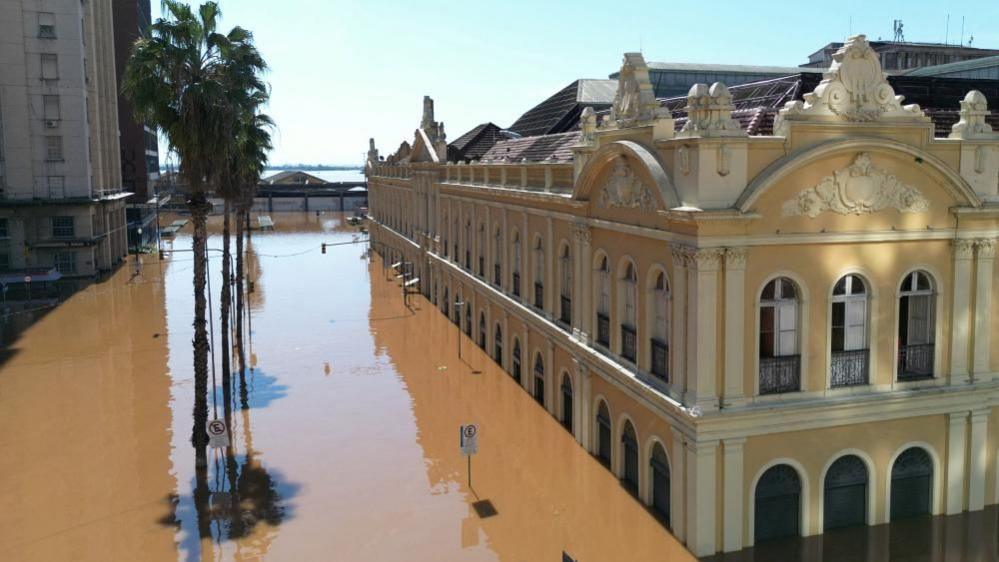
- Published13 May 2024
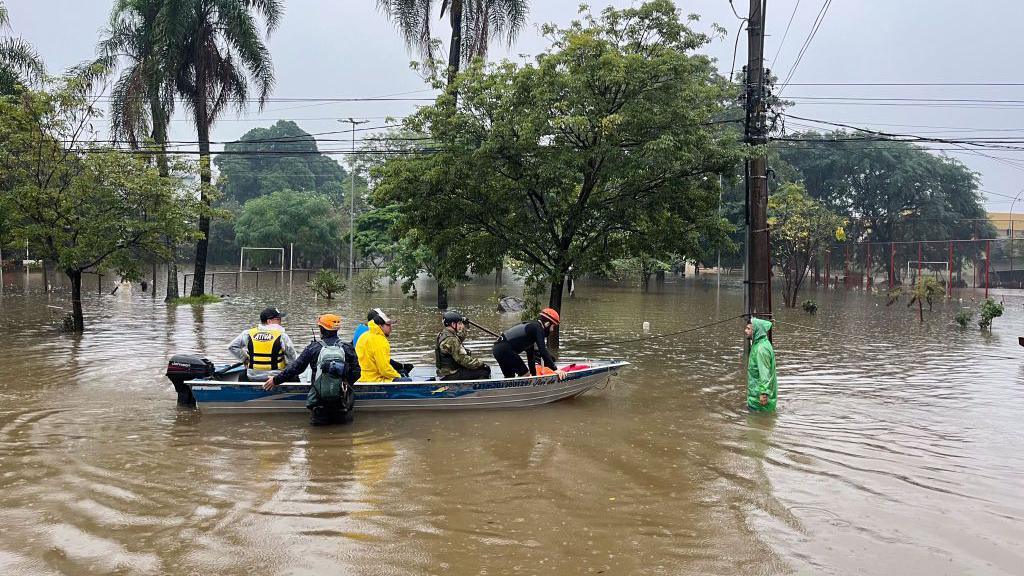
- Published14 May 2024
